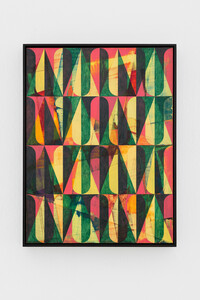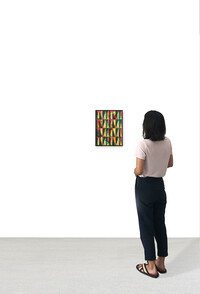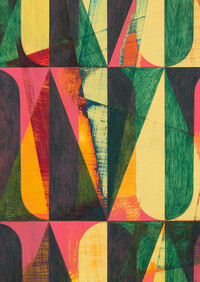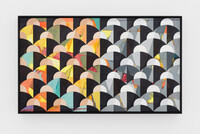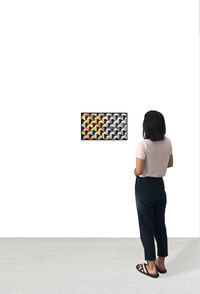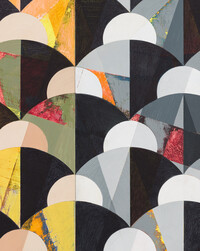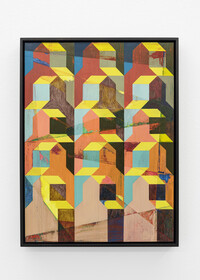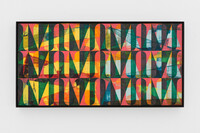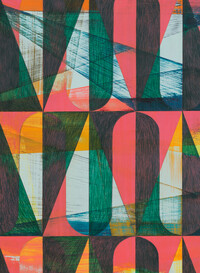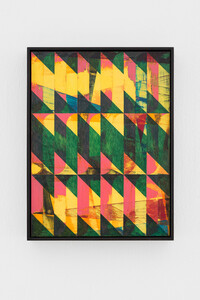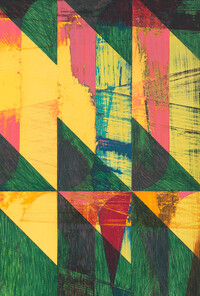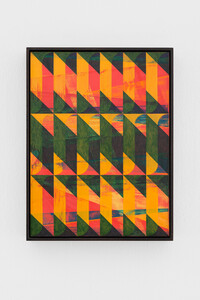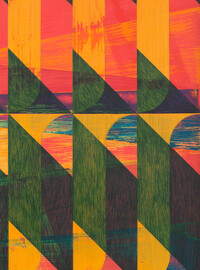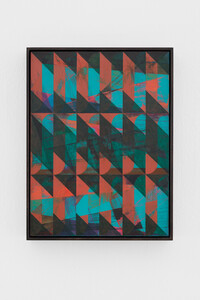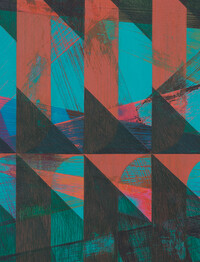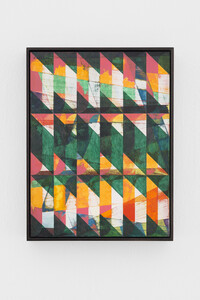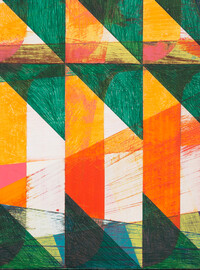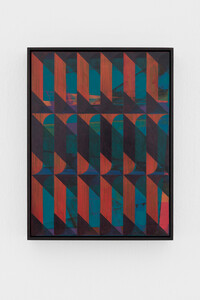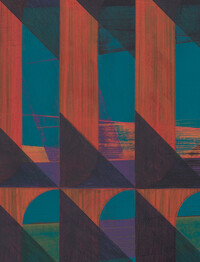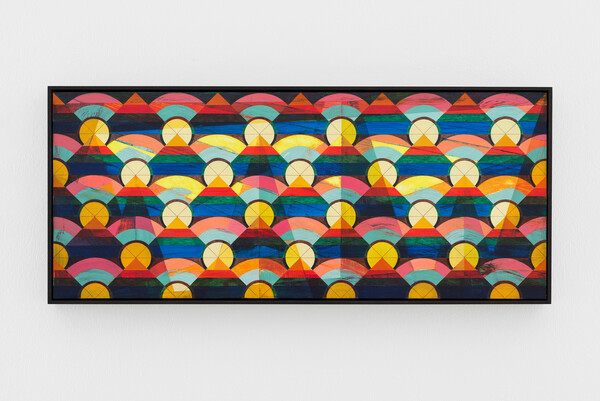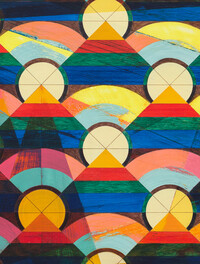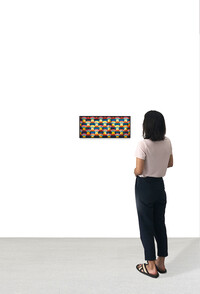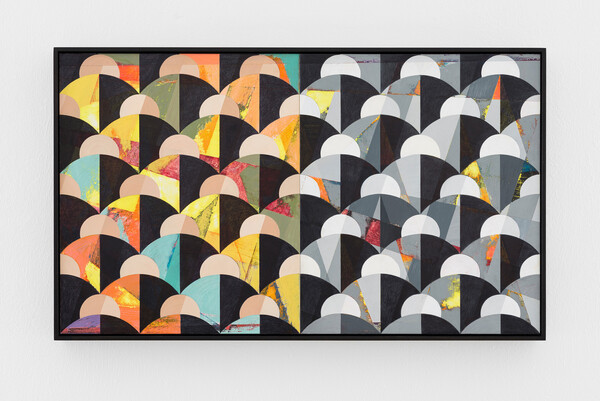As a painter, I mainly believe what I see, and what I see shapes my imagination.
Bernd Ribbeck
The discrepancy that emerges between what is depicted and how it is depicted is important for my work.
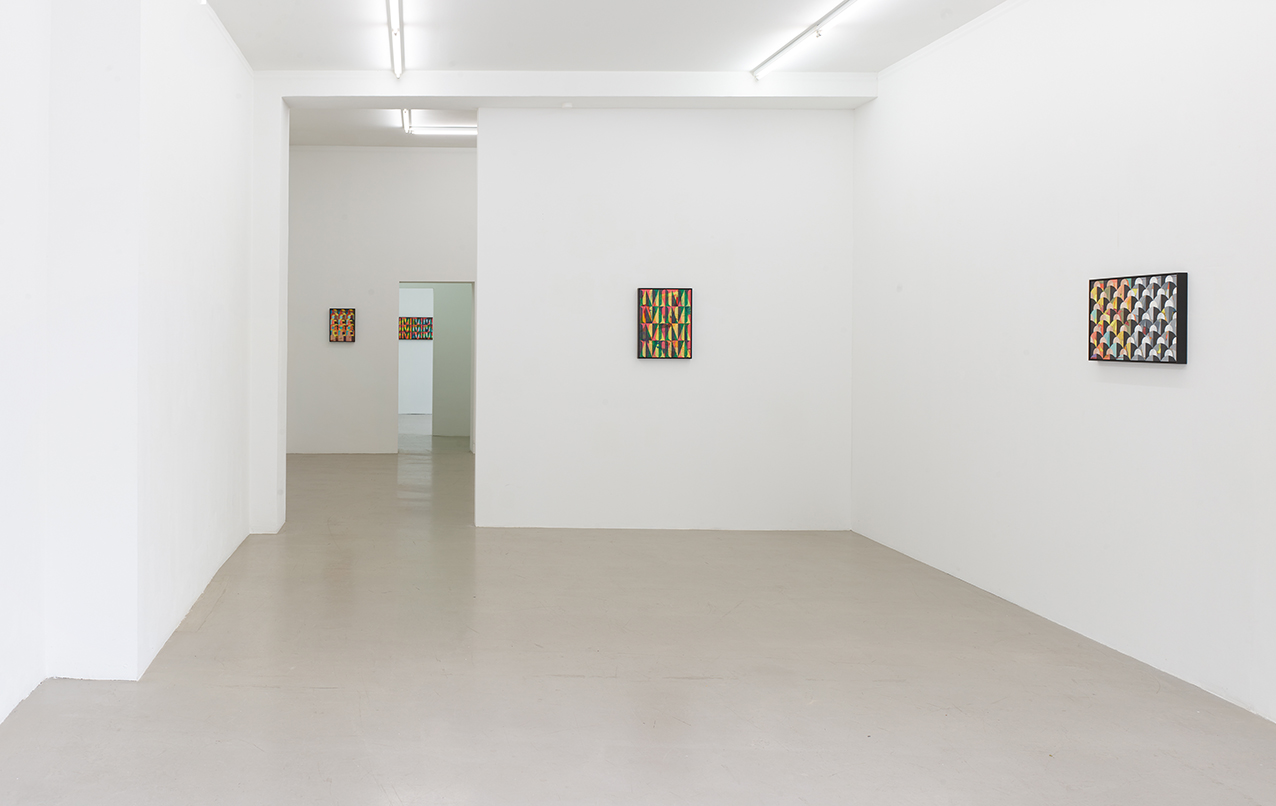
Duality as a conceptual and productive principle is a characteristic feature of Bernd Ribbeck’s work. Mathematics / spirituality, transcendence / immanence, transparency / opacity, space / surface, modernism / outsider art, rationality / intuition, drawing / painting construct the complex “DNA” of Bernd Ribbeck’s abstract compositions. In his small-format paintings and drawings, he condenses them as geometrical and painterly elements to form an illusion of seemingly infinite mental spaces. At the same time, the paintings themselves are objects in space. Paint is applied in several layers on MDF, partially ground, and then overdrawn with pen and pigmented markers based on previous detailed sketches made on squared drawing paper.
A “wandering” through time is also embodied by his abstract shapes that draw from the high culture of modernism, the codes of outsider art, medieval celestial maps, mathematical representations of solar systems, or the basic geometrical forms that have always existed.
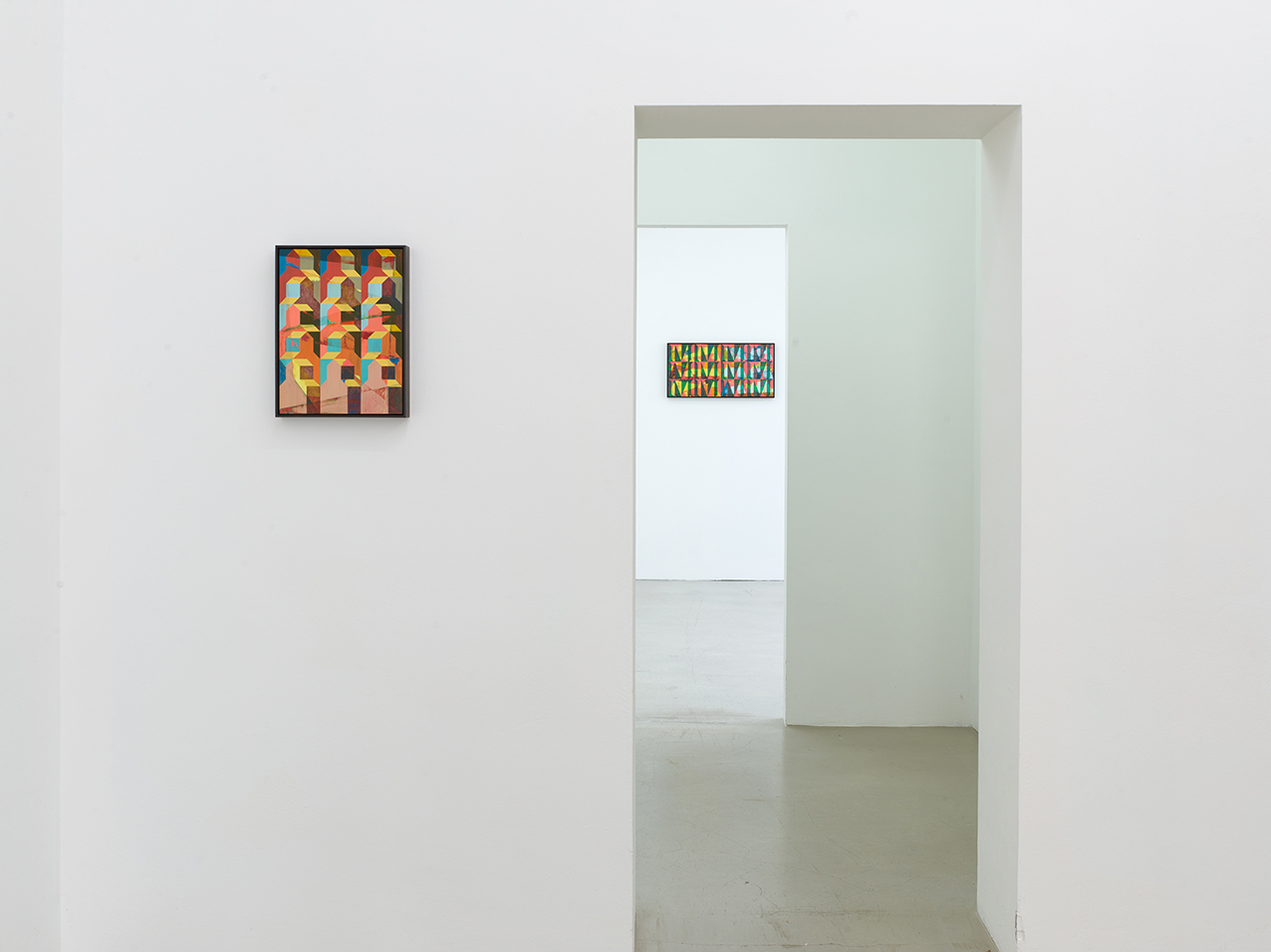
Crosshatching is also a gesture, but the gesture needn’t have a size of two or three meters. It is also a question of attitude, the kind of self-confidence one wants to convey, and I find, there is also a gesture on a small scale.
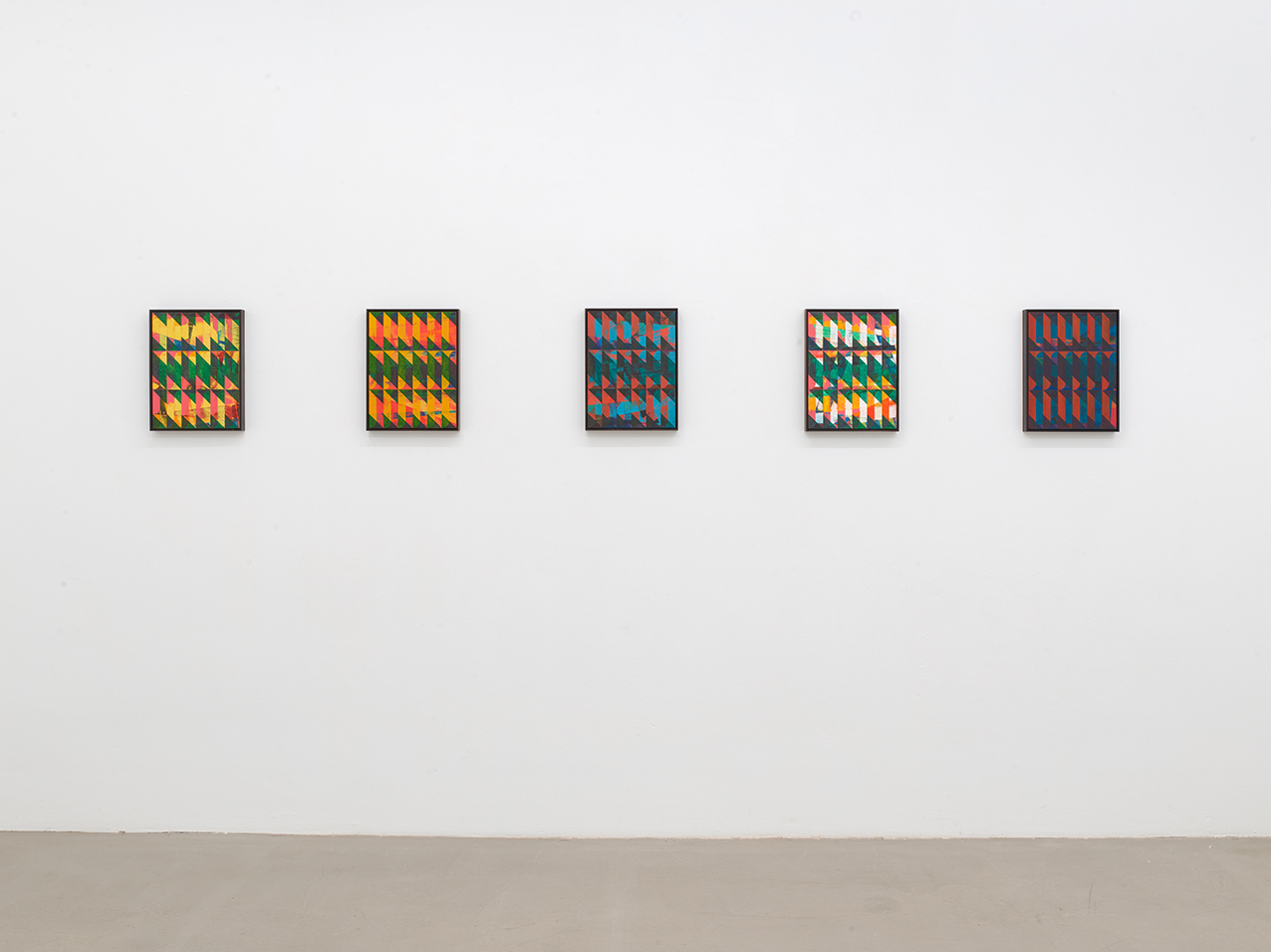
Bernd Ribbeck’s new works on view in the current show expand the play with time. The predominantly horizontal formats and the hanging of five picture panels in relation to each other construct a successive mode of viewing, as one is familiar with from reading or watching movies. This gives rise to a wonderfully exciting tension between rational, language-based thought and visual, nonverbal thought. For the first time, Bernd Ribbeck integrates fragments of what seem to be graphic characters in his pictures. By repeating and connecting the most various levels of painting and drawing, they turn into abstract landscapes. This mental expanse, which has also been an integral aspect of Bernd Ribbeck’s previous pieces, is continued in a special way in this group of five works. By repeating what is supposedly identical, Bernd Ribbeck develops a complex method of visualization that time and again constructs new perspectives via the alteration of depth, light, opacity and transparency. The “impressions” change, like a landscape that never remains the same.
Bernd Ribbeck
Untitled, 2022/017, 2022
Acrylic, pigment marker and ballpoint pen on MDF
framed 30 × 72 cm
In regard to one of his pictorial shapes constructed with circles, arches and triangles, he speaks of “nautical motifs.” By maneuvering through mental landscapes, different levels of depths are explored. The color composition on the left-hand side of the diptych is expanded by the right-hand side, which is painted in grisaille technique, and simultaneously interwoven by means of flashing color spots. The complex relationship between the contrasts of color, lightness and darkness, between the softer and more distinct contours of the horizontal compositions literally draws one’s view into the picture and at the same time lets it wander about to discover new details. One “sees and reads” Bernd Ribbeck’s new works in an unusual way, focusing and passing by sections, details and sequences. A dialog emerges between the outside world and one’s inner experience; visual thought can be found in the aesthetic structure.
Bernd Ribbeck
Untitled, 2022/016, 2022
Acrylic, pigment marker and ballpoint pen on MDF
framed 35 × 60 cm
Bernd Ribbeck (DE 1974) lives and works in Berlin. His works have been shown in numerous international exhibitions and are represented in several institutional collections such as Museum of Modern Art New York, Museum Haus Konstruktiv Zurich, Sammlung de Belvedere / 21er Haus Vienna, Städtische Galerie im Lenbachhaus Munich, Kunstpalast Düsseldorf or the Wilhelm-Hack Museum Ludwigshafen. His solo exhibitions at Haus Konstruktiv in Zurich and Wilhelm-Hack Museum Ludwigshafen are accompanied by a comprehensive publication by Distanz Verlag.
